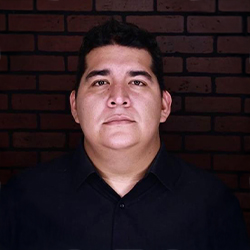Math and Physics for NDT: Radiographic Testing 18 November 2025
Strengthen the math and physics skills needed for radiographic testing. This course covers radiation behavior, safety calculations, exposure principles, and image quality techniques used in film and digital radiography.
Member: $300
Credit Info
- Contact Hours: 5
- IACET CEUs: N/A
- Valid for ASNT Level III recertification: Yes
Course Overview
This course provides a comprehensive foundation in mathematical principles essential for RT applications.
It is split into two sections, the first is a pre-requisite section where learners will strengthen essential mathematical skills by mastering numerical formatting, unit conversions, exponents, and logarithms while applying the order of operations to solve equations. You will also explore trigonometric principles, including right triangle properties, Pythagorean theorem, and sine functions, to build a strong foundation for technical and engineering applications.
This second part of the course provides a comprehensive understanding of radiation physics and safety principles for RT professionals. Learners will explore radiation behavior, measurement units, and key calculations related to source activity, energy, and half-life. They will apply ALARA principles to determine safe working distances, shielding thickness, and exposure times while analyzing radiation attenuation and the effects of Compton scatter. The course also covers techniques for optimizing image quality, including geometric unsharpness, film density, and contrast adjustments using characteristic curves. Participants will learn to apply the inverse square and reciprocity laws, interpret IQI standards, and assess discontinuities using parallax. By the end of the course, learners will be equipped with enhanced mathematical skills to perform radiographic testing procedures.
*Students will need access to a Casio FX-260 Solar or other non-programmable scientific calculator for use during the course*
Upon Completion, Learners Will Be Able To:
- Explain differential absorption, identify contributing physical factors, and differentiate atomic number, mass number, and isotopes
- Define key radiation measurement units (roentgen, rad, rem, becquerels, curies) and perform conversions between standard units
- Calculate source activity, specific activity, and understand the relationship between wavelength, frequency, intensity, and energy of X-rays and gamma rays
- Calculate remaining activity based on half-life and interpret its role in radioactive decay curves and equations
- Apply ALARA principles, calculate safe working distances, shielding thickness, exposure times, and dose rates using relevant formulas
- Use the linear attenuation coefficient formula, account for buildup factors, and explain the impact of Compton scatter on ionizing radiation
- Calculate and minimize geometric unsharpness, determine source-to-film distance, and evaluate film density and contrast using characteristic curves
- Use the inverse square law and reciprocity law to adjust exposure times based on changes in source-to-film distance, current, or material properties
- Select and interpret IQI standards, determine appropriate marker placement, assess discontinuity depth using parallax, and differentiate CR and DR imaging systems
Meet the Instructor

Jorge Reyna
Jorge is a seasoned NDT, welding, and coatings inspection professional with extensive field experience across Mexico, Panama, Ecuador, and China. He holds ASNT Level III certifications in multiple methods, is an AMPP Master Coatings Inspector, AWS SCWI, and ACI Certified Concrete Field Testing Inspector. Fluent in Norwegian and Italian, Jorge brings global expertise to every project. Since 2013, he has managed his own inspection firm, JRSA Inspections, based in Monterrey, Mexico.
Questions? Contact us at education@asnt.org